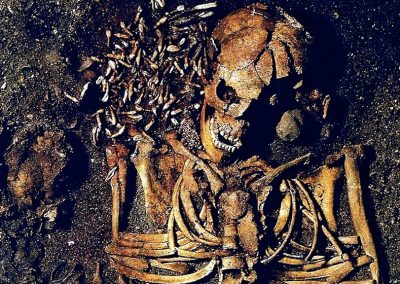
The National Museum
The National Museum of Denmark, in the heart of Copenhagen, is the museum where you can experience the story of Denmark from the first Mesolithic hunters to the last hash stall from Christiania.
Denmark’s story and more
The museum has a large collection of objects from cultures all over the globe. The National Museum is Denmark’s largest museum and there is free admission to all its exhibitions.
From Danish prehistory to 1970s living rooms
Explore Denmark’s earliest prehistory and see treasures from Viking raids, prehistoric bodies from bogs and mounds, such as the woman from Huldremose and the Egtved Girl, and not least the Sun Chariot – a unique Bronze Age object made of bronze and gold, depicting a horse figure pulling a sun disc. Other prehistoric highlights include the Gundestrup Cauldron and the famous Golden Horns. The Danish Middle Ages and Renaissance collection spans the period from 1050 until 1660 and includes many striking objects, for instance, from churches and manor houses. The displays at the National Museum also cover Danish history from the period of absolute monarchy to the modern era of the welfare state.
Egyptian mummies, magic amulets and the Children’s Museum
At the National Museum you can gain an impression of Danish and world history. Explore Classical and Near Eastern Antiquities, where you can find Egyptian mummies and 4000-year-old Greek marble figurines. The Ethnographic Collections take you on a trip around the whole world and display magical amulets from Greenland, a Japanese Samurai suit and dramatic Indian goddesses. Visit the Victorian Home, merchant Rudolph Christensen’s large luxurious apartment, which still stands as it did when it was designed in the 1890s. The main National Museum building (the Prince’s Palace) also houses the Children’s Museum for younger visitors. They are free to touch, examine and play with the items in the museum, take a cruise on the Viking ship, explore the medieval castle and much more.





